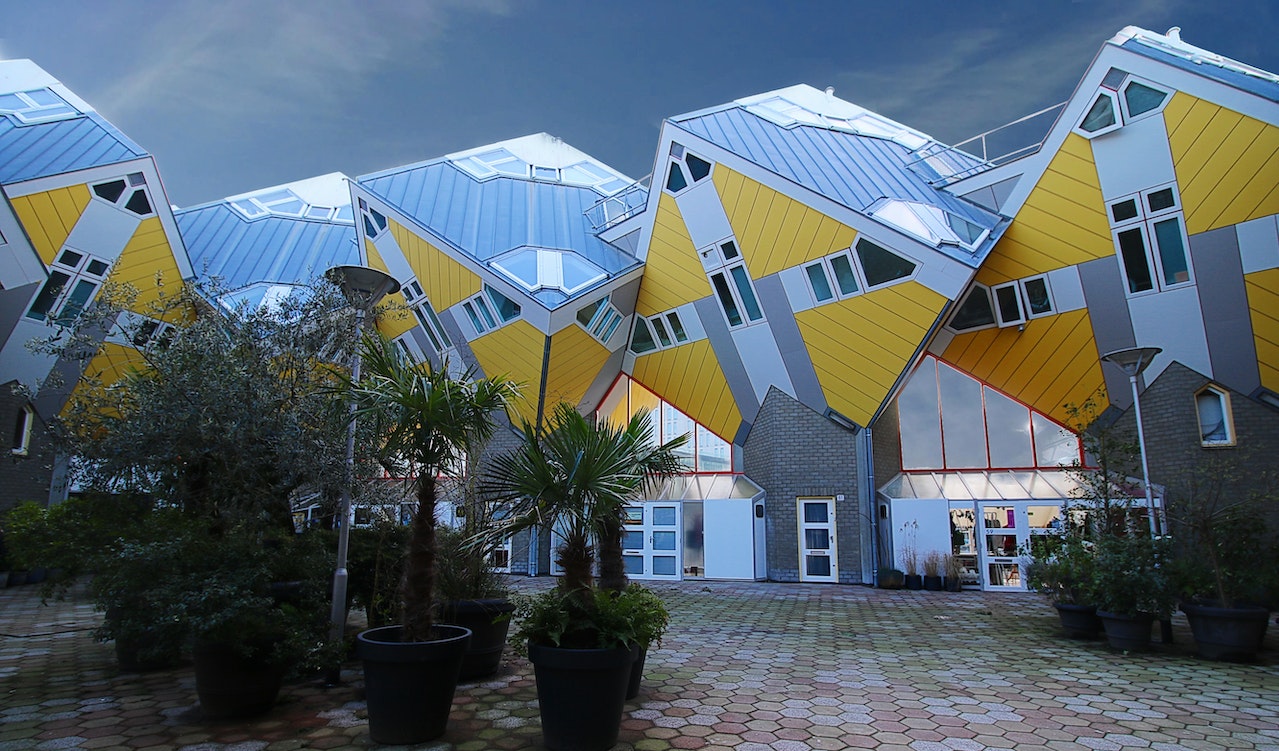The Impact Of Artificial Intelligence On Architectural Design And Planning - Harnessing The Power Of AI For More Innovative Buildings
The impact of artificial intelligence on architectural design and planning has the potential to revolutionize the way architects and designers work, and it is important to understand its potential impact on this field.
Author:George EvansMar 16, 2023264 Shares264.2K Views

Artificial intelligence (AI) is a technology that has been gaining popularity in recent years, and its potential impact on various industries cannot be ignored. One of the areas that AI has already started to impact is architectural design and planning.
The impact of artificial intelligence on architectural design and planninghas the potential to revolutionize the way architects and designers work, and it is important to understand its potential impact on this field.
In this article, we will explore the impact of AI on architectural design and planning, including the benefits and challenges that come with its implementation. We will also look at some examples of how AI is currently being used in architecture, and what the future of AI in architecture may look like.
What Is AI?
Before delving into the impact of AI on architecture, it is important to have a basic understanding of what AI is. AI is a branch of computer science that focuses on creating intelligent machines that can perform tasks that would normally require human intelligence.
These machines are programmed to learn from experience and can adapt to new situations and data inputs.
AI is often used to analyze large amounts of data, identify patterns, and make predictions based on that data. This makes it a powerful tool for a wide range of industries, including architecture.
The Impact Of Artificial Intelligence On Architectural Design And Planning
AI has the potential to revolutionize the way architects and designers work. Here are some of the ways AI is already being used in architectural design and planning:
Generative Design
Generative designis an approach to design that uses algorithms to generate a wide range of potential design solutions. This approach can be used to quickly explore a large number of design options and can help architects and designers find innovative solutions to complex design challenges.
Generative design can be particularly useful in architecture, where there are often many different constraints that need to be taken into account when designing a building.
For example, architects may need to design a building that is energy-efficient, accessible, and aesthetically pleasing, while also meeting local building codes and regulations.
AI can help architects and designers generate design options that take all of these factors into account, while also exploring new and innovative design solutions.
Building Performance Analysis
AI can also be used to analyze building performance data, such as energy usage and occupant comfort, in order to identify areas for improvement. By analyzing this data, architects, and designers can make more informed design decisions that can lead to more energy-efficient, comfortable, and sustainable buildings.
For example, AI can be used to analyze building performance data in order to identify areas where energy usage could be reduced, such as by optimizing heating and cooling systems or improving insulation.
This can help architects and designers create more sustainable buildings that are better for the environment and for occupants.
Material Selection
AI can also be used to help architects and designers select the best materials for a given project. By analyzing data on the properties and performance of different materials, AI can help architects and designers make more informed decisions about which materials to use in a building.
For example, AI can be used to analyze data on the strength, durability, and environmental impact of different materials, in order to help architects and designers choose materials that will be durable, sustainable, and cost-effective.
Challenges Of Implementing AI In Architecture
While AI has the potential to revolutionize the way architects and designers work, there are also challenges that come with its implementation. Here are some of the challenges that architects and designers may face when implementing AI in their work:
Cost
One of the main challenges of implementing AI in architecture is cost. AI systems can be expensive to develop and implement, and many smaller architecture firms may not have the resources to invest in this technology.
Training
Another challenge is the need for training. AI systems require large amounts of data in order to be effective, and architects and designers may need to spend significant time and resources to collect and prepare this data. Additionally, architects and designers may need to learn new skills in order to effectively use AI in their work.
Ethical Considerations
AI raises ethical considerations that architects and designers must consider when implementing this technology in their work.
For example, AI systems may be biased in their design recommendations, leading to buildings that are not accessible or safe for all users. Architects and designers must be careful to ensure that AI systems do not perpetuate biases or discrimination.
Examples Of AI In Architecture
Despite these challenges, there are already examples of how AI is being used in architecture. Here are a few examples:
The Living's "Hy-Fi" Pavilion
The Living, a New York-based architecture firm, used generative design algorithms to create the "Hy-Fi" pavilion for the Museum of Modern Art's PS1 summer exhibit in 2014. The pavilion was made entirely of organic, biodegradable materials, and was designed to be both sustainable and aesthetically pleasing.
The generative design approach allowed The Living to explore a wide range of design options, ultimately resulting in a unique and innovative structure.
Google's "Project Sunroof"
Google's "Project Sunroof" uses AI to analyze satellite imagery and other data in order to estimate the solar energy potential of individual buildings.
The tool can help homeowners and businesses make more informed decisions about installing solar panels, and can also help architects and designers make more informed decisions about building design.

How will Artificial Intelligence impact Architecture and Construction?
Arup's "Optimo"
Arup, a global engineering and design firm, developed "Optimo," a tool that uses AI to analyze building performance data and identify opportunities for improvement. The tool can help architects and designers optimize building performance in real time, leading to more energy-efficient and comfortable buildings.
People Also Ak
How Can AI Help Architects And Designers Create More Sustainable Buildings?
AI can help architects and designers create more sustainable buildings by analyzing building performance data and identifying areas where energy usage can be reduced, as well as by optimizing the selection of building materials.
What Is Machine Learning?
Machine learning is a type of artificial intelligence that focuses on enabling machines to learn from data and improve their performance over time.
How Can Machine Learning Be Used In Architecture?
Machine learning can be used in architecture to analyze large amounts of building performance data and identify patterns and correlations that can help architects and designers make more informed design decisions.
How Can Virtual Reality Be Used In Architecture?
Virtual reality can be used in architecture to create immersive experiences that allow architects and clients to explore a building design before it is built, in order to identify areas for improvement and ensure that the design meets the client's needs.
Conclusion
The impact of artificial intelligence on architectural design and planning has the potential to be significant.
AI can help architects and designers generate innovative design solutions, analyze building performance data, and select the best materials for a given project. However, there are also challenges that come with the implementation of AI, including cost and the need for training.
Despite these challenges, the potential benefits of AI in architecture make it an area worth exploring further. As AI technology continues to develop, it is likely that we will see more widespread adoption of these tools in the architecture industry.

George Evans
Author
George Anderson, an exceptional architectural designer, envisions and brings to life structures that transcend the realm of imagination. With an unwavering passion for design and an innate eye for detail, George seamlessly blends form and function, creating immersive spaces that inspire awe.
Driven by a deep appreciation for the interplay of space, light, and materials, George's innovative approach redefines the possibilities of architectural design. His visionary compositions leave an indelible mark, evoking a sense of wonder and transforming the built environment.
George Anderson's transformative designs and unwavering dedication continue to shape the architectural landscape, pushing the boundaries of what is possible and inspiring generations to come.
Latest Articles
Popular Articles
